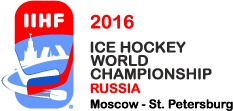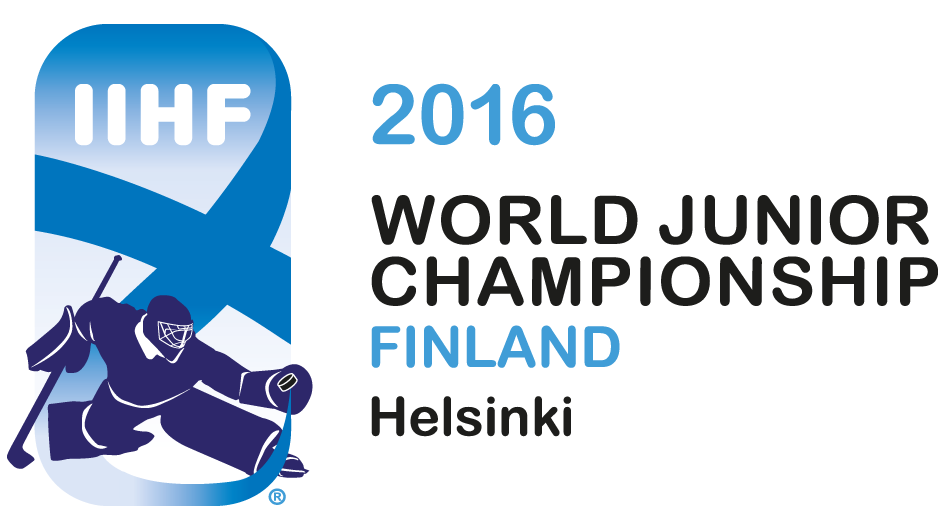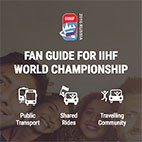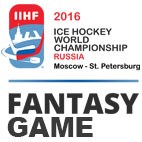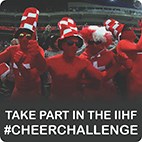Premiere ends with silver
Premiere ends with silver
A look back at Worlds on Russian soil: 1957

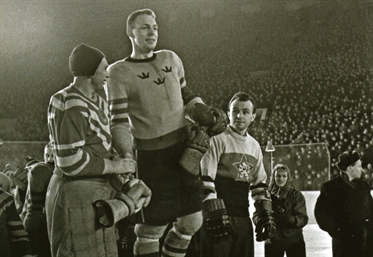 Sweden won gold at the 1957 Worlds, host Soviet Union had to settle for silver, the Czechoslovaks won bronze. Photo: Archive Vsevolod Kukushkin
Sweden won gold at the 1957 Worlds, host Soviet Union had to settle for silver, the Czechoslovaks won bronze. Photo: Archive Vsevolod Kukushkin
Each Thursday a story about an IIHF Ice Hockey World Championship that took place in Moscow or St. Petersburg will be published on iihfworlds2016.com written by contemporary witnesses of each event. Today we start with the 1957 Worlds that were the first to be held in the Soviet Union and set a single-game attendance record of 55,000 that would stay for many decades.
The League International de Hockey sur Glace (LIHG) as the international Ice Hockey Federation was then called passed the decision on staging the 1957 IIHF Ice Hockey World and European Championships in Moscow. The first event in the Soviet Union was a signal that sports stayed out of politics in line with the sport’s governing body’s principle established by its presidency under a John “Bunny” Ahearne, a British of Irish heritage.
The overriding argument in favour of the venue was the Soviets’ hockey achievements during a very short period of membership. The Soviets sensationally won in their first World Championship appearance in 1954 and silver the following year behind only to Penticton Vees of Canada, but went on to win the 1956 Olympic gold medal in Cortina d’Ampezzo, Italy. The Olympic title was at the time the World Championship title.
Among eight national squads arriving in Moscow – Czechoslovakia, Sweden, Poland, Finland, Austria, Japan, the German Democratic Republic (“East Germany”) and the Soviet Union – there was no other team with that heavy set of awards. Now, according to the new competition regulations teams were entitled to win 17 medals for players, two to coaches and one to chef de mission and the hosts’ goal was clear.
For the USSR capital, the World Championship was an event of exorbitant magnitude. The sports-minded public came to love the sport used to be named “Canadian hockey” at that time as opposed to the other ice team sport of bandy (with the ball) called “Russian hockey”.
Shortly before the championship in Moscow, a new indoor Ice Sports Palace sprang up at Luzhniki with a seating capacity according to some evaluations of up to 15,000. Actually, the project was for 12,000 seats for hockey and other indoor sports events. The agitation in Moscow was exceptional. Three special post stamp collections had been produced, so Moscow philatelists stuck to enjoy the rare chance.
Apart from the Palace, games were also to be played in the open air on natural ice flooded at the Luzhniki Grand Arena North Terrace accommodating some 40,000, and Dynamo Stadium, at the West Terrace of the football pitch, a real Winter Classic.
Incidentally, someone on the local organizing committee apparently compassionate toward players but far from sports, proposed, quite seriously, to put cognac and vodka in dressing rooms for players coming out from the cold for intermissions, to warm up but, above all, to boast real Russian hospitality. Temperatures ran at about -10°C (14°F). Fortunately, hockey people managed to cool those hot-headed functionaries down and reduced the locker room services to tea and coffee.
A rather modest opening ceremony was held in the evening of 24th February at the Luzhniki Sports Palace prior to the USSR-Japan game. Despite the obvious mismatch, the game attracted a full house. The hosts won 16-0. However, the opening game saw Sweden vs. East Germany also play at the Palace in front of filled tribunes and the game ended with a Swedish 11-1 win. In contrast, the “winter classic” at the Dynamo opener, Finland vs. Poland had a mere 1,000 fans despite much tougher competition in a 5-3 win for Suomi. In the morning game that same day, Czechoslovakia blanked Austria 9-0.
The very first days of the competition showed clearly that the Soviets were the favourites along with Czechoslovakia and Sweden. No upsets were registered, saving the outcome of Japan vs. Austria, as Japan let their chance for a sensation slip. With two minutes remaining, the puck ricocheted off Yamada and into the Japan’s net making it 3-3.
As the tournament was unwinding, it was getting clearer that the medals would land in a triangle USSR, Sweden and Czechoslovakia. In a face-to-face encounter on 27th February, in front of 35,000 fans at Luzhniki, Sweden beat Czechoslovakia 2-0. The weather intervened badly. There was thaw with intermittent snowfalls with the puck sticking in the snow. Sweden had one standout in Sven “Tumba” Johansson, who soon became a fan favourite in Moscow.
The USSR vs. Czechoslovakia winter classic was played on 2nd March at Luzhniki, in front of 40,000 spectators. The kids in Moscow could sneak in with no special problems although there was no lack of sold tickets for the organizers.
The Czechoslovaks chose a glutinous type of play with its players acting purposely slow, cutting the Soviets’ edge in speed. The defencemen headed by Karel Gut tried hard (and successfully) to contain Vsevolod Bobrov, the Soviets’ high-scoring star. The action went on in an uneven rhythm ending with a 2-2 tie. Experts were of the opinion that game was Czechoslovakia’s best performance throughout the tournament.
Thus, the USSR vs. Sweden game scheduled for 5th March was to become the final tilt of the round-robin event. To win the title the Soviets needed a victory while for Sweden a tie would be sufficient. The pre-game constellation was ill-fated for the Soviets as Bobrov was missing on the line-up for that crucial tilt due to an injury suffered in the game against Czechoslovakia and the team’s captain patch was sewn on Nikolai Sologubov’s sweater.
The game started with total confusion for the Soviets, as Sweden, much to their own surprise, jumped to an early lead 2-0 midway through the first period. The Soviets concentrated on containing Sven Johansson as Sweden’s most dangerous performer, thus leaving other young Swedes unattended, specifically Eilert Maatta.
The young ones were crucial to the outcome in the long run. The game went see-saw. The Soviet team played brilliantly through all the second period scoring with four unanswered goals scored within a span of ten minutes. Young Veniamin Alexandrov of CSKA Moscow, experienced Nikolai Khlystov of Krylya Sovietov (“Soviet Wings”) and CSKA defencemen Ivan Tregubov and Nikolai Sologubov scored those four goals.
The third period would eventually decide about the outcome. With the 4-2 lead, the hosts apparently thought they closed the deal allowing themselves to simply skate around, thinking the “magic apple” would fall in their lap. This thinking has often been punished in the past and in the present and that “final” game was not different.
Eje Lindstrom scored an early goal 2:00 into the third period while Maatta equalized at 9:18. The Swedes were able to stand tall to heavy pressure by the Soviet team for the remainder of the game and won their second world title in history.
As the game was played in the open air, the musicians of the band tried to warm themselves up as they could. Nobody wished to miss the action, so they all stayed close to the ice rink. They had the music notes ready, naturally, those of the Soviet national anthem, although Sweden’s anthem had, of course, also been rehearsed. Therefore, it turned out the band had to play the national anthem of the Kingdom of Sweden.
When the band started to play the Swedish anthem the players were wearing the yellow sweaters with the three crowns on them and began to sing. However, they did not know the words and neither did the Soviet fans so team captain Roland Stoltz started singing a popular Swedish drinking song.
As the band finished playing the anthem, a flock of little kids including myself rushed to the ice through the snow covering the football pitch, hoping to get the players’ sticks only to see the Swedish players blow their sticks to bits against the ice. Thus, we could not get a single memory stick to our total dismay.
Many years later, when I saw Tumba Johansson at his golf course in a Moscow suburb, I told him the story, and he commented: “Well, sure enough we never gave it a thought and crushed the sticks symbolizing the end of it,” said the grey-haired Swedish hockey legend, shaking his head slowly. “But, gee, we were really happy.”
Bad luck for the Soviets on home ice – although the team never lost a single match – cost head coach Arkadi Chernyshev his job.
The tournament’s best players nominated by the tournament directorate included Czechoslovak goaltender Karel Straka, Soviet defenceman Nikolai Sologubov and Swedish forward Sven “Tumba” Johansson.
All Games Results:
Sweden v East Germany 11-1 (5-0, 5-0, 1-1)
Soviet Union v Japan 16-0 (4-0, 6-0, 6-0)
Finland v Poland 5-3 (0-2, 3-1, 2-0)
Czechoslovakia v Austria 9-0 (4-0, 2-0, 3-0)
Czechoslovakia v East Germany 15-1 (6-1, 5-0, 4:0)
Finland v Soviet Union 1-11 (0-4, 0-4, 1-3)
Sweden v Poland 8-3 (2-1, 2-2, 4-0)
Japan v Austria 3-3 (0-2, 3-0, 0-1)
Finland v East Germany 5-3 (3-1, 1-1, 1-1)
Sweden v Czechoslovakia 2-0 (0-0, 1-0, 1-0)
Japan v Poland 3-8 (1-1, 2-2, 0-5)
Soviet Union v Austria 22-1 (9-0, 10-0, 3-1)
Soviet Union v Poland 10-1 (1-0, 4-1, 5-0)
Finland v Czechoslovakia 0-3 (0-0, 0-1, 0-2)
Sweden v Austria 10-0 (3-0, 2-0, 5-0)
Japan v East Germany 2-9 (0-3, 1-2, 1-4)
Austria v Finland 2-9 (2-4, 0-4, 0-1)
Soviet Union v Czechoslovakia 2-2 (0-0, 1-1, 1-1)
East Germany v Poland 6-2 (2-1, 3-0, 1-1)
Japan v Sweden 0-18 (0-5, 0-10, 0-3)
Poland v Austria 5-1 (3-0, 1-1, 1-0)
Sweden v Finland 9-3 (2-1, 3-1, 4-1)
Soviet Union v East Germany 12-0 (1-0, 5-0, 6-0)
Japan v Czechoslovakia: 1-25 (0-11,0-7, 1-7)
Austria v East Germany 1-3 (0-1, 1-0, 0-2)
Japan v Finland 2-5 (1-0, 1-3, 0-2)
Poland v Czechoslovakia 3-12 (1-3, 1-6, 1-3)
Soviet Union v Sweden 4-4 (0-2, 4-0, 0-2)
Back to Overview

